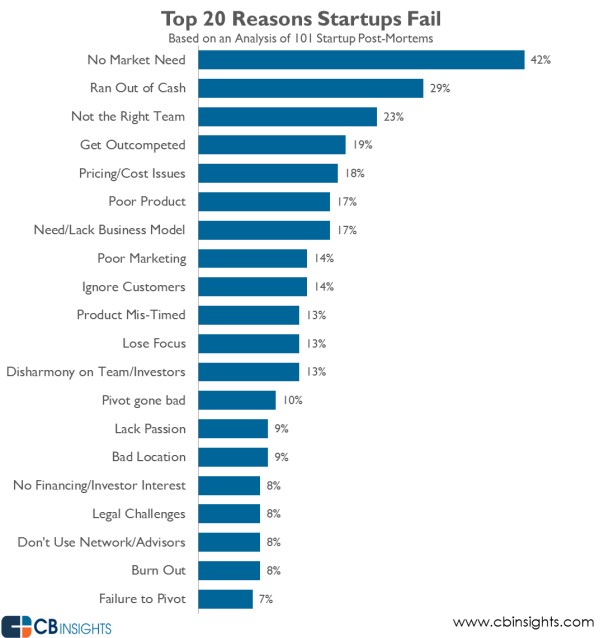Startup ABC #3: Smoke Test
Why Startups fail too often and too early
Starting a business is generally one of the more risky undertakings. The more innovative the idea or the business model is, the more pronounced this circumstance becomes. According to a study by the business analytics platform CB Insights , the main reason for the failure of startups is the lack of an actual customer-side need.
This means that many ideas are simply developed past the customer. The products or services offered are often developed with a lot of time and money. However, they meet with little approval from the intended customer.
The founders and their employees may have neglected to test at an early stage whether the imagined market actually exists. A successful product or service must not only be technically coherent. Above all, the team must understand what the customer's needs are, whether they will be satisfied by the offering, and whether satisfaction will result in sufficient willingness to pay. In order to be able to answer these questions as early as possible and with little effort, it is a good idea to carry out a smoke test, among other things.
What is a Smoke Test and how does it help?
The term "smoke test" has its origins in the field of programming. First and foremost, it refers to a test that is intended to uncover the simplest errors in software that make a roll-out impossible at an early stage. Smoke tests are sometimes carried out by a dedicated test team before more in-depth testing. Simple questions such as "Does the software start?" or "Does the user interface open at all?" are the subject of smoke tests.
Eric Ries, author of the book "Lean Startup: Creating Fast, Risk-Free, Successful Companies (The Lean Startup)," has applied the concept to startups. Instead of testing for early bugs in a program code as in software development, the concept for startups is applied to testing the most critical early assumption: On whether demand actually exists for the proposed offering.
According to Ries, a smoke test for startups consists of a one-page website, a landing page. This describes the product and asks the visitor to sign up for a newsletter or mailing list for further updates. At this point, the product has not yet been developed, but a high number of registrations shows the interest of potential customers and allows conclusions to be drawn as to whether the startup's solution will actually meet with demand. Since nothing has been developed at this point, any lack of interest can be counteracted without major losses. If, on the other hand, people are interested in a product that is only available as a concept, the founding team should pursue this path.
Ries describes in particular that it is important to test the willingness to pay at an early stage. Leaving an email address can be seen as a form of payment. However, it is also possible to insert a payment button at an early stage. Such a test sometimes excludes relatively more potential customers. However, if it is successful, this is an even stronger signal to proceed. At the same time, the money can go towards faster development or better quality of the solution.
A Smoke Test can be implemented with simple means. Various providers offer the possibility to create a landing page for free. The challenge is then to be able to show it to potential customers. For this purpose, it is a good idea to run an advertising campaign. Even with small amounts of money, relatively simple but effective campaigns can be set up via Google Ads or Facebook, for example. If you would like to know more about the design and implementation of smoke tests, please contact the TU Clausthal start-up service. Please use our initial consultation form or contact us by mail or phone.

